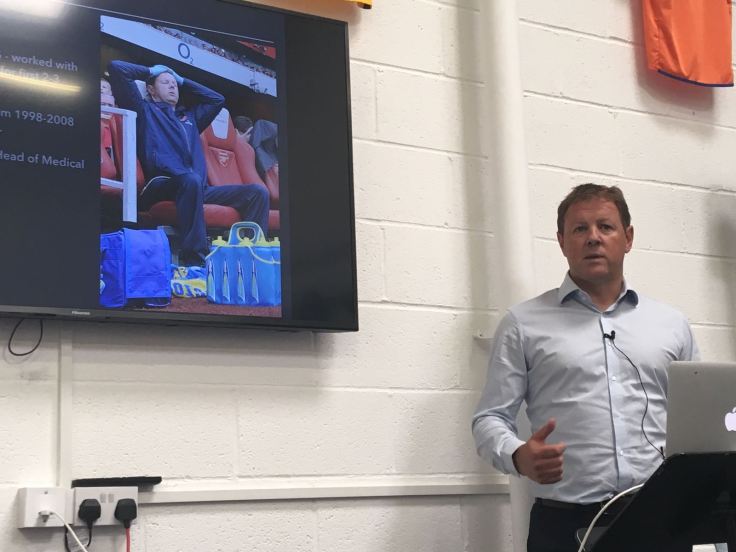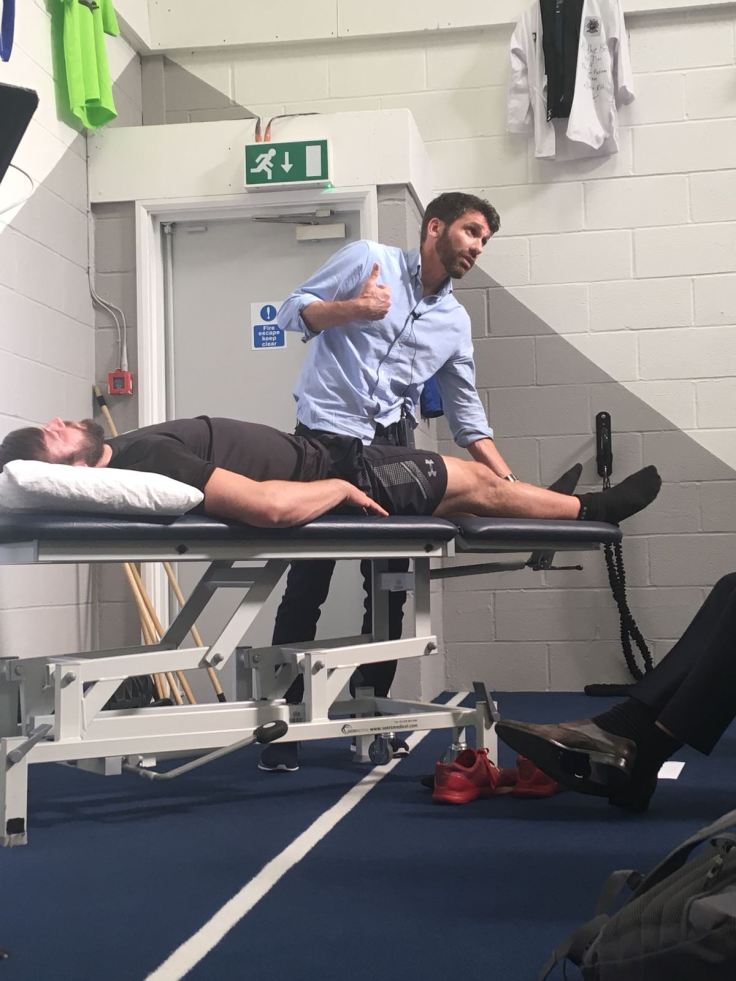So after a good few days break over the international weekend I’m now able to sit down and write down my reflections on last Friday’s Sports Medicine Conference at Go Perform in Reading. It was a great day with a large number of high quality speakers which has left me with a lot to reflect upon. Below are the key points and themes that were present throughout the day.
- Early identification is important
A theme that came out of the first two talks of the day revolving around patellar tendinopathy rehabilitation and management of Pars Fractures was the importance of trying to create a culture and department structure whereby these pathologies can be identified early. There is obvious advantages to identifying these two pathologies early with the ability to reverse reactive tendinopathies, and hopefully catch a stress response before it progresses to a fracture in the lumbar spine and therefore decreasing the rehabilitation period and future implications for the athlete. Doing this is obviously easier said than done, but these two talks definitely highlighted the importance of trying to achieve an open culture where the players feel able to report any symptoms early in the process.

Colin Lewin discussing the evolving rehabilitation of the Patellar tendon
2. Don’t forget to listen to your athletes
So this theme became apparent in a number of the lectures by Brian O’Leary and Robin Sadler, but was probably at its most apparent in the fantastic talk by Chris Mercer. Chris spoke about masqueraders in the young athletes and after telling a very personal story from his career we were left in no doubt as to the importance of listening to what you are being told by the person in front of you. Brian O’Leary reinforced this by reminding us all that just because we see our patients every day and think that we might know everything about them, things change and we must continue to take an in depth subjective assessment as if they had walked in off the street. As Chris said, when you hear hooves we should think horses, but make sure you are listening and examining thoroughly because sometimes that noise will actually be a zebra!! Nobody wants to be caught out by the zebra as it can have real consequences for our patients.

Chris Mercer discussing masqueraders in the young athlete
3. If you don’t try and feel it, then you won’t ever feel it!!
This is a quote from Robin Sadler of Derby County who re-emphasised the point mentioned above whereby we must not only listen to our patients, but also get our hands on and feel what is going on with the patient in front of us. Whether this is palpation of the anterior hip during the ASLR test, or palpating the “rings” of the thorax…….we can’t rule out the influence of them if we haven’t even assessed them. Brian O’Leary also suggested not only getting hands on, but utilising videos in order to try and improve our ability to analyse movements and compensatory patterns within our athletes. Again whilst on the topic of thorough objective assessments Chris Mercer’s talk springs to mind where he highlighted that if we don’t palpate the abdomen routinely then how can we try and rule out diagnoses such as lymphoma.

Robin Sadler demonstrating objective assessment techniques for the Hip & Groin
Summary
The above blog is just a summary of three key themes that I picked up throughout the day as there was so much to reflect upon from the day that this blog would go on for 5000 words if I tried to summarise everything that I took from all of the talks!!! But below is a summary of each of the nine talks, if any of them interest then I have put links to their twitter pages if you just click on their name below!
Colin Lewin– No two tendons are the same, make sure you identify the onset and any mechanism to treat it successfully
Moiz Moghal- Don’t feel the need to rush the acute stages of management as future requirement for surgical intervention severely hampers a patients career
Duncan Foster– Positive and enthusiastic response ensures the best possible scenario
Chris Mercer– When you hear hooves it is usually horses, but there will be that one zebra who sticks with you for the rest of your career, so stay alert to them!
Brian O’Leary– Make sure that you understand the injury and its biomechanical implementations and address the kinetic chain appropriately
Robin Sadler– Don’t be afraid to try and feel what is going on, if you don’t try and feel it then you will never feel it
Nev Davies– Prevalence of ACL injuries is going up, and with high recurrence rates it is important that we instigate prevention programs
Luke Anthony– Try to create a stronger “spring” as this will increase the capacity to absorb forces
Jon Fearn- It is important to tailor the rehabilitation process to the individual. No two rehabilitations should be the same!
Thanks for reading!!

Leave a comment